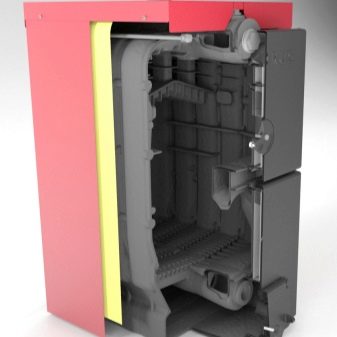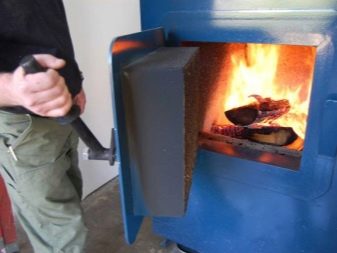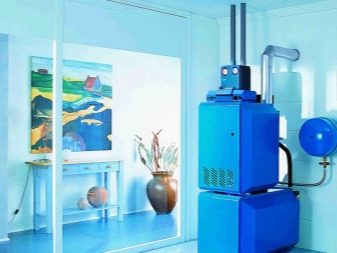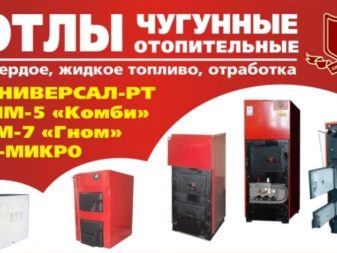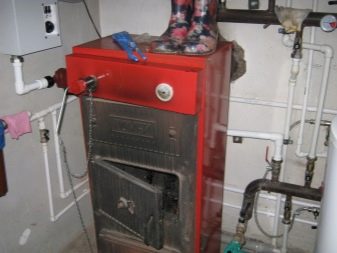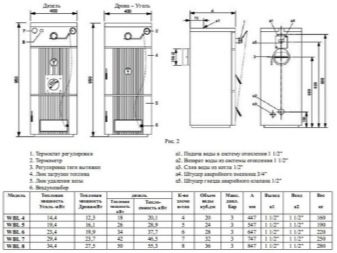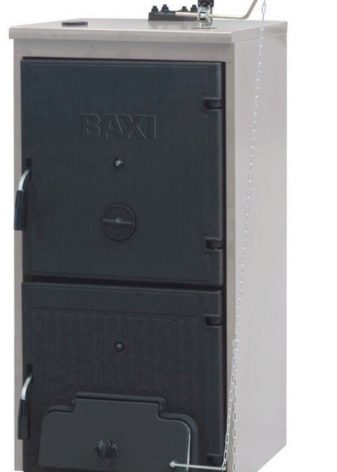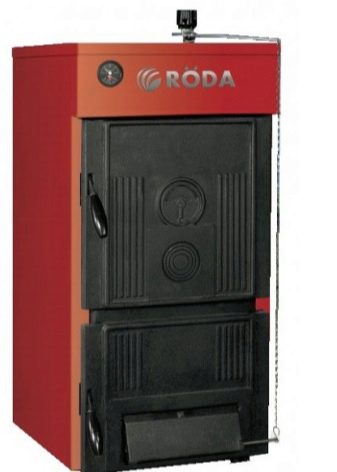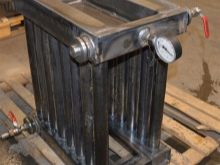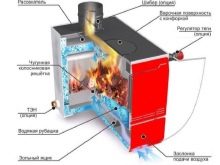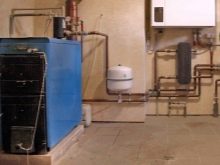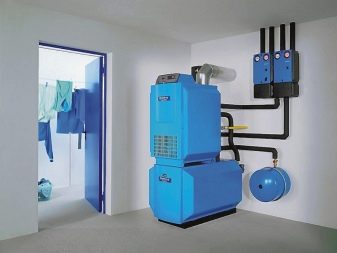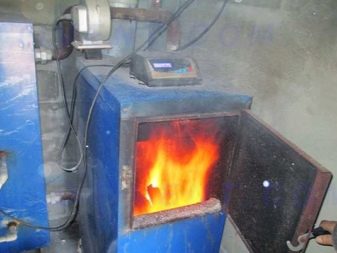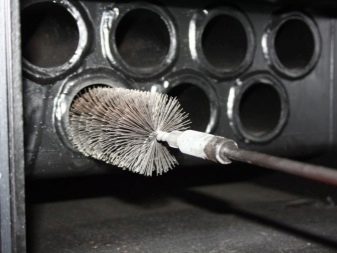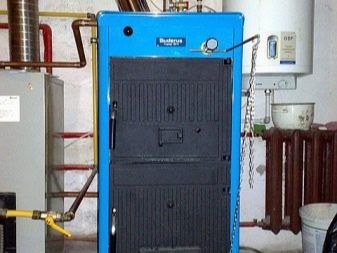Types and advantages of cast iron boilers
Heating equipment is the most diverse in performance. But for objective reasons, the main working parts and its body are made exclusively of metal. More precisely, from steel or cast iron.
Special features
Modern cast iron boiler is produced mostly with heat exchangers, which are made of hollow segments. To increase the power of the device, it is necessary to increase the number of installed sections. The connection should be tight, the cavity is saturated with water or antifreeze. Outside is the firebox. There are a number of single-circuit and double-circuit boilers made of cast iron, which, respectively, serve only the heating circuit or supply hot water also to the water supply system.
Cast iron heaters have been used for many decades., all this time their reliability and stability is consistently confirmed. Coppers of this type successfully tolerate even the highest possible pressure that occurs during operation. Even the load caused by pressure jerks, instability of combustion or fuel supply, blowing wind into the chimney, is experienced very easily. Stability is confirmed by long periods of branded guarantees.
If cast iron boilers served little, manufacturers, exposing the warranty period of 35-50 years, would simply go bankrupt.
Advantages and disadvantages
If we compare cast iron boilers with steel counterparts, it is obvious that they turn out to be better in corrosion resistance. Steel rusts pretty quickly, so the structure breaks. But cast iron, if used correctly, has been quietly operated for decades. Therefore, a seemingly significant amount in the beginning is actually distributed over a long period and becomes much less sensitive for owners.
There are also objective weak points that can appear if the features of such structures are not taken into account.
- Cast iron is very fragile. Many reviews regarding its destruction or the appearance of cracks would actually be worth addressing to carriers or installers.A seemingly insignificant mechanical defect can destroy expensive equipment in a matter of seconds.
- Another bad thing is that cast iron boilers are extremely susceptible to temperature changes occurring abruptly. Under the action of unnecessarily rapid cooling or warming up, there is a risk of cracking of the heat exchangers. This means that you have to continuously monitor the temperature difference between the flow and return circuits. A four-way mixing valve partially helps to avoid this problem. But reducing the risk of deformation leads to an increase in the cost of construction.
- A significant mass of cast iron boilers is not very practical in everyday life.
- What is more, they cost more than steel structures with comparable characteristics.
Quite good results are given by the use of boilers КЧМ, which are made by OJSC “Kirovsky Zavod”. The products of this company has proven itself about 300 years ago, and all this time it carefully preserves its reputation. The KCM line is solid fuel and has excellent performance.
Consumers note the practicality of the equipment and its excellent maintainability.
The abbreviation is literally decoded as “modernized cast-iron boiler” and it must be said that it justifies its name 100%. As indicated in the accompanying documentation, the product is able to warm up to 2240 square meters. m of residential or non-residential area, it is perfectly compatible with both gravitational and machine circulation of the coolant. Mineral wool is used for thermal protection, which simultaneously carries considerable heat and does not pose a danger to people.
The main advantages of this particular series are:
- wide range of thermal power from 21 to 80 kW;
- minimum space occupied;
- no need for electricity;
- ease of cleaning and repair work;
- minor requirements for fuel quality;
- availability of a network of service centers;
- robust grate.
Types and characteristics
The use of Russian products is very good, even wonderful. But to show the basic properties of cast iron boilers of various types, without resorting to products of foreign industry, will be problematic. An excellent example of a cast iron sectional boiler with a hollow heat exchanger is the Italian product Lamborghini WBL.
It has the following characteristics:
- special design that allows you to maintain the maximum intensity of heat generation and increased efficiency;
- Suitability for installation of special diesel burners;
- the admissibility of the use of long firewood;
- independence from electrical supply (due to mechanical adjustment).
The minimum cost of such a product allows you to successfully apply it in small country and country houses.
It is useful to pay attention to the solid cast iron boiler Baxi BPI-Eco. In the course of its production, so-called high-ductile iron is used, which is less than the usual one suffering from the occurrence of cracks due to shock or excessive heating. Hot water boilers of this model can have a power of 25-65 kW. They are extremely roomy, and the primary air supply is carried out in accordance with the setting indicated by the thermostatic valve.
Designers took care of the use of the most effective and safe in the fire relation type of insulation. The ashpit is also quite capacious, it is easily removed.
German products from the Roda concern, belonging to the Brenner Classic collection, stand out for a considerable service life. The developers were able to introduce a large-size firebox into a compact device.
Consumers say:
- ease of use (due to the exclusion of complex parts, the risk of violation is minimal);
- automated control of power and performance;
- ease of fuel loading;
- rational and thoughtful heat protection.
Its specificity, regardless of brand, have cast iron boilers with a water circuit. Heating of the coolant in the heat exchanger, and after that, and in the entire system, is achieved in approximately 1 hour. The performance of water boilers far bypass conventional air vehicles. The situation is excluded when only the boiler room itself and the contours adjoining it are warming up.
Since the boiler is made of cast iron, especially with designs for passing water, it turns out to be very heavy, it should be placed on a screed made of concrete, and preferably raised above the rest of the floor.
Recommendations for use
- The best place to place the boiler is the central part of the dwelling.If it is not possible to use it for this purpose, it will be necessary to allocate a garage (another extension) or create a separate boiler room. Of course, in such cases it is necessary to install not an air, but a water boiler: only he is able to supply heat quite effectively.
- It is not allowed to store in the room where the apparatus is placed, any flammable and especially those prone to explosion of substances and objects. The minimum recommended distance to the wall is 0.5 m, and a sheet of metal is placed in front of the firebox. It would be useful to put the boiler itself on a metal lining. It is advisable to use clay or heat resistant sealant to isolate the contact of a chimney with a boiler flue.
- Before starting the boiler, it is imperative to check the draft in the system and the pressure in the heating line. Do not open the furnace in the process of work, kindle firewood or coal with kerosene, gasoline, vegetable oil. It is also unacceptable to place any objects on top of the boiler in order to dry them.
- Since the door in the furnace is heated during work, thrust adjustment and the addition of new portions of fuel are made only in mittens. Failure to comply with this rule dramatically increases the risk of burns.You also need to carefully monitor that children do not just do not load the fuel, but simply are not located near the working boiler.
- It is necessary to strictly comply with the recommendations on the intensity of loading the boiler with wood or coal. An excess of them provokes excessive heat and adversely affects the characteristics of the system.
- At least once every six months, cleaning of the smoke ducts and the burner is required. It is imperative to check if all joints are tight. Responsible owners ensure that the coolant level does not decrease. A useful option is the installation of the mixing unit, which reduces the risk of destruction under the action of the temperature difference. Having found a leak even in one section only, it is necessary to replace it immediately.
- It is impossible to add cold water to a working system, before that it should cool down to at least 40 degrees. If the boiler is stopped during the summer months, a five-minute start should be carried out every 30 days. This will help avoid jamming of mechanical parts. In the case of automatic shutdown due to overheating, you need to do nothing, just wait for cooling.
- The requirements for connecting automated models and their electrical safety are the same as those of other boilers and other electrical equipment.
On the pros and cons of cast iron boilers, see the following video.


